Using the three basic premises of Design Thinking – Empathy, Ideation and Prototyping – and leveraging the creation of a multidisciplinary environment, Design Sprint is emerging as a new way for accelerated innovation, where speed and innovation go hand in hand.
Design Sprint is a smart track for fast experimentation: buidling on what Jeff Bezos claims -“If you double the number of experiments you do per year, you will double your ability to invent”-, Design Sprint mastering can brin a tremendous value to the company.
What are the various methods, and are there some limitations to their benefic use? This is what we’re going to go through.
What is a Google Design Sprint?
Philippe Antoine did an enticing job presenting the Design Sprint methodology on Google booth at Vivatech last June. What is Google Design Sprint approach? It’s a five days framework, combining Design Thinking with Lean Startup, to move from a customer problem to a range of creative ideas, and a tested prototype. In other words, it helps answer critical business questions through rapid prototyping, and user testing.
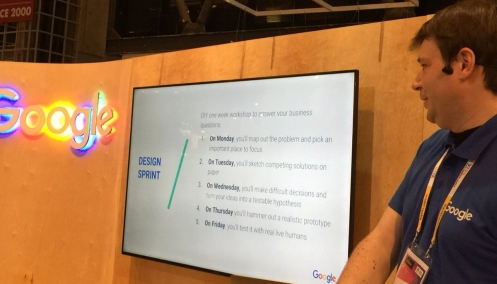
At Vivatech, Philippe managed to turn the 5 days in a 10’ demo, processing the 5 steps of the approach in an impressive whirlwind: “the faster the better” as they say at Google, meaning time pressure is good for the project!
Let’s go back to the main steps of the Design Sprint framework:

- Understand: the team maps out the problem to focus on, and unites under a shared brain; this phase involves lightning talks, which are 10- to 15-minutes sessions given by knowledge experts, as well as the “How might we” note-taking method, and affinity mapping; the team puts himself in the shoes of the user with user journey mapping, user interviews, empathy building exercices, and success metrics;
- Sketch solutions on paper: generate a broad range of ideas, and narrow down to a select group; team members are given time and space to brainstorm solutions on their own: they can look to comparable problems for inspiration, take note, boost idea generation, share and vote, and narrow down to one well defined idea per person, creating their own detailed Solution Sketch;
- Turn your ideas into testable hypothesis, and Decide as a team what to prototype to answer your sprint questions; after the presentation of individual solution sketch, the team will identify the assumptions it wants to test, vote, and select a direction; a decision matrix can help the team evaluate ideas;
- Prototype only what you need to validate your ideas in a very short time; hammer out a realistic prototype, a facade of the experience you have envisioned in the sketch phase. Design a barest minimum but usable prototype, taking advantage for instance of of Pop App, an app that transforms pictures of a story board into clickable UI; think of your prototype as an experiment in order to test out hypothesis;
- Test the prototype with real live humans, and validate. The team finally gets to see live users interact with their ideas and hear direct feedback from the target audience. Everyone on the team observes the Validation sessions: watching your users try out the prototype is the best way to discover major issues with your design, which in turn lets you start iterating immediately. In addition, the team can organize a review to collect feedback from Technical Experts or Leadership Stakeholders.
![DCWwWHXXsAAS7Z4[1]](https://nbry.files.wordpress.com/2018/03/dcwwwhxxsaas7z41.jpg?w=511&h=188)
To make your Design Sprint more efficient, Google suggests a few preparation tips, like writing a Sprint brief, collecting User Research, assembling a cross-functional team, planning Lightning Talks, creating a Deck, finding the right Space, getting the Supplies, setting the stage, the ground rules for Sprinting, and choosing a good ice-breaker! Innovation fortune only favors the prepared mind.
![DCWyDb0XoAE16pV[1].jpg](https://nbry.files.wordpress.com/2018/03/dcwydb0xoae16pv1.jpg?w=442&h=331)
Another way to look at Design Sprint is what Google Ventures says about it: “The sprint gives teams a shortcut to learning without building and launching. You can fast-forward into the future to see your finished product and customer reactions, before making any expensive commitments.”
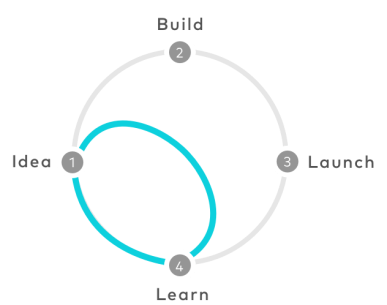
What is a Mc Kinsey Concept Sprint?
The concept sprint by Mc Kinsey is a fast five-day process for cross-functional teams to brainstorm, define, and model new approaches to business issues. It follows the following steps, not unlike the Google Design Sprint, but tailored to the business realities of larger, more complex incumbents, and vetted for tangible business impact.
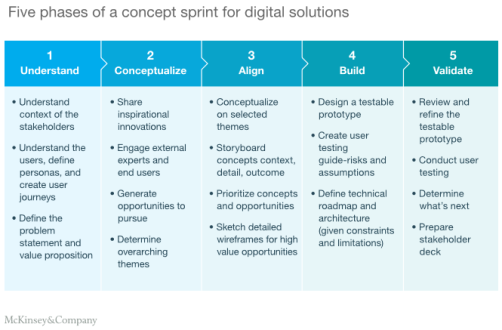
Going down to 3-days or 1-day Design Sprint?
I attended last year a workshop facilitated by CxStudio (C stands for both customer and collaborator experiences, which must re-connect one to another according to CxStudio vision). They explained their Design Sprint approach in 3 days, moving from interviews to discover the user problems, to ideation, and prototyping.
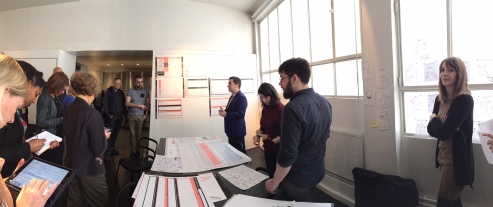
The specificity of CxStudio is to bring employees and customers together for the 3 days: it creates then an autonomous collective, and activate change inside the corporation at the same time.
- Day One aims at unfolding the main user problem that the brand shall address
- going through the user journey of persona, what they do, what they feel, what is tiring to them, what they need, how it would work better if…, at specific moments of truth in their relationship wiht the brand;
- identifying main irritants, enchanted pleasing moments, needs, tension points, insights, drivers, directions to untangle the situation;
- crossing views between customers and collaborators.
- Day 2 focuses on ideation
- diverging, letting go, and converging;
- keeping in mind persona, and stakeholders;
- leveraging ‘work cafe’ configuration.
- Day 3 is dedicated to prototyping, and modelling or mock-up (video translating the user expérience), MVP test with users.
The next steps are based on continuous improvements, and pilots, to transform the prototype into a business stream.
Are 3 days too long? Never mind, MJV Technologies mentions a 1-day Sprint: “By creating viable prototypes in a short period of time and using the capabilities of internal teams, the company can, in just one day, take a substantial leap into the future.”
Is Design Sprint speed, or haste?
As they say, speed is one thing, and haste another. The Design Sprint seems definitely a wise booster for innovation.
But are there some drawbacks that would turn speed into haste? I suggest to keep in mind 5 potential pitfalls:
- On-boarding of users for testing: Design Sprint ends the 5th day with the validation of the prototype with the real user target: but will you always find the user target at your door in one day? Some prototypes need real on-boarding endeavour that shall not be understimated. What if the Google Design Sprinters target farmers frome the Middle-Esat with their creative idea? Will they will find them in the Silicon Valley in the neighbourhood of the Google Campus? Probably not.
- Misleading innovation timeline: the short time frame of the Sprint can give management a false idea of the timeline of an innovation project. At the end of the 5 days, you have a validated concept, not a go-to-market product. The road can still be long until the market launch.
- Transforming concept into business: transforming the prototype into a business stream, is not only a question of product industrialization, it’s also a matter of distribution channels, customer relationship, resources, partnerships, profitable model, all things that often require the engagement of parent business unit within the company. This transformation process where your innovative concept creates an opportunity for your partner business unit is a delicate scale-up to handle.
- Test Fast, Fail Fast philosophy inconsistent with the uncertainty of disruption: Design Sprint borrows to Test Fast, Fail Fast mindset; this might be difficult to align with the time frame of disruptive innovation where the innovation first appears uncertain, almost unappealing, and takes time and resilience to become the new tradition.
- Testing the viability, not the usability: at the validation stage, this is what we’re looking for, and the wise design of an appropriate Minimum Viable Product aims at validating assumptions. While in the Design Sprint, prototyping seems the only way to go, prototype is only one among various possible MVPs as shown below.
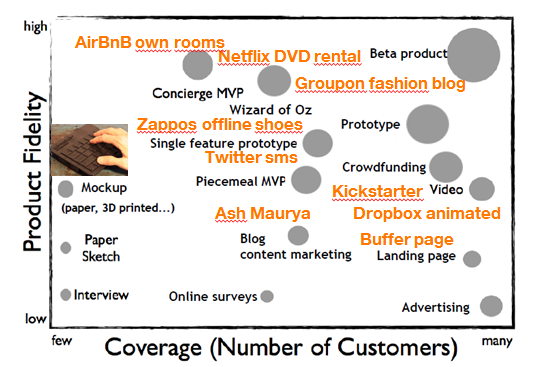
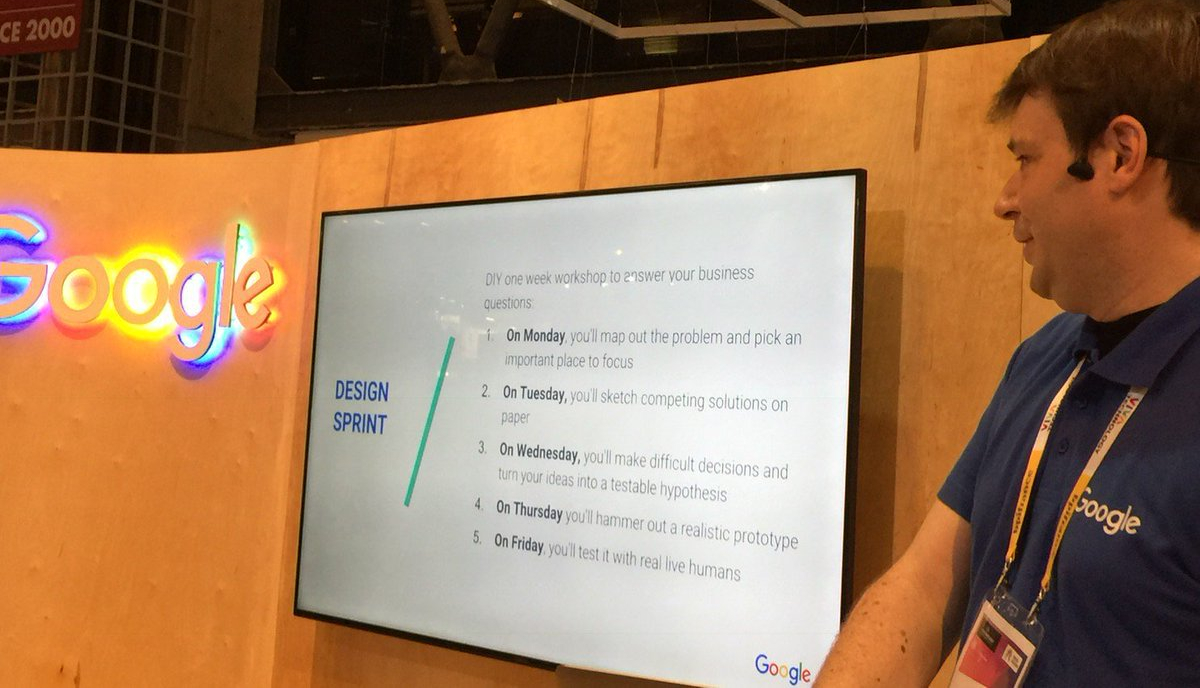
thanks for the information